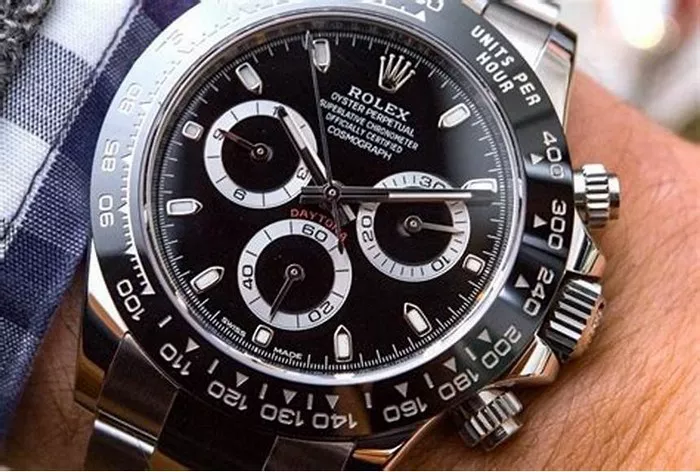The quintessential tool watch for frequent flyers, the Oyster Perpetual GMT‑Master II continues to evolve with the times while maintaining its distinct character.
As a titan in the watchmaking industry, Rolex has crafted a collection of timepieces that are revered globally. Among these, the Oyster Perpetual GMT‑Master II stands out as a model that has truly stood the test of time.
Evolution of the GMT-Master II
Initially launched in 1955 as the Oyster Perpetual GMT‑Master, this watch was designed for professionals like airline pilots and navigators who needed to track two time zones simultaneously. The original model featured a self‑winding mechanical movement with a 24‑hour hand to indicate the second time zone, and the wearer would adjust the bezel to track this time.
The significant upgrade came in 1982 when Rolex introduced the GMT‑Master II. This new iteration featured the calibre 3085, allowing the hour hand to be set independently from the other hands. This meant that the wearer could now adjust local time without moving the bezel or halting the watch, a major improvement for those who frequently traveled across time zones.
Further innovations followed, including the introduction of the calibre 3186 in 2005. This movement incorporated Rolex’s exclusive blue Parachrom hairspring, made from a paramagnetic alloy. This hairspring offered improved precision and resilience against magnetic fields, temperature variations, and shocks. It also featured Rolex’s overcoil, enhancing the movement’s regularity.
In 2005, Rolex made a notable leap by introducing a ceramic bezel insert. This high-technology material, named Cerachrom, was incredibly durable, scratch-resistant, and resistant to ultraviolet rays. Initially black, Cerachrom later appeared in various two-tone combinations, preserving the iconic design of the GMT‑Master.
In 2013, Rolex introduced its first two-color monobloc Cerachrom insert in blue and black, followed by a red and blue version the next year. This latter combination was a technical achievement, as creating it from a single ceramic component posed a significant challenge.
Recent Developments
The GMT‑Master II received another upgrade in 2018 with the calibre 3285, which included several patents for improved precision and reliability. Key features included the Chronergy escapement made of nickel-phosphorus and high-performance Paraflex shock absorbers, enhancing shock resistance. Since 2023, the movement’s oscillating weight has been fitted with an optimized ball bearing.
The latest models introduced this year feature new Oystersteel versions of the GMT‑Master II. One model sports an Oyster bracelet, while the other has a Jubilee bracelet. Both feature a 24-hour graduated two-tone Cerachrom bezel insert in grey and black, with the numerals and graduations coated with platinum via physical vapor deposition (PVD). The 40 mm Oystersteel case houses a black lacquer dial with a green “GMT‑Master II” inscription, reflecting the design’s enduring legacy.
Certification and Legacy
Like all Rolex watches, the GMT‑Master II is certified as a Superlative Chronometer. This status, redefined by Rolex in 2015, indicates that each watch has undergone rigorous in-house tests, ensuring precision, power reserve, waterproofness, and self-winding performance. The precision standard for Rolex Superlative Chronometers is a deviation of just −2/+2 seconds per day, a much tighter tolerance than that required for COSC certification.
The Superlative Chronometer status is symbolized by the green seal that accompanies every Rolex watch, coupled with an international five-year guarantee.
In Summary
The Rolex Oyster Perpetual GMT‑Master II has not only adapted to technological advancements over the decades but has also retained its essential character. Its continuous evolution reflects Rolex’s commitment to innovation while honoring its rich heritage, ensuring that it remains a prestigious tool watch for the modern era.

